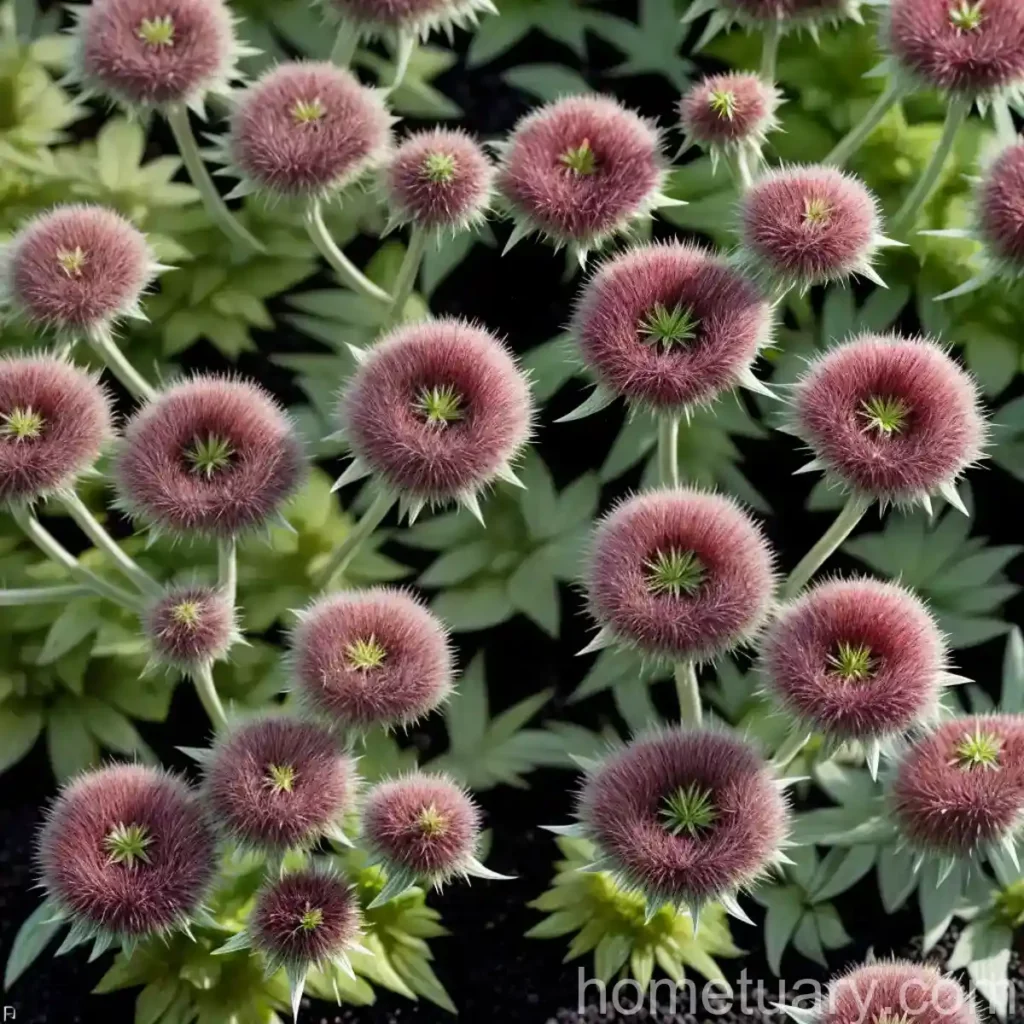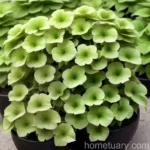Acaena Inermis Purpurea: The Ultimate Guide
Acaena inermis ‘Purpurea’, commonly known as Purple Sheep’s Burr, is a fascinating and versatile plant that offers numerous aesthetic and ecological benefits. With its unique foliage and ground-covering capabilities, this plant is a valuable addition to any garden or landscape. In this comprehensive guide, we will delve into the various aspects of Acaena inermis ‘Purpurea’, including its culture, uses, care requirements, common pests and diseases, propagation, and much more. Whether you are a seasoned gardener or a novice plant enthusiast, this guide will equip you with the knowledge needed to cultivate and appreciate this remarkable species.
What is Acaena inermis ‘Purpurea’?
Acaena inermis ‘Purpurea’ is a low-growing, perennial evergreen plant that belongs to the Rosaceae family. This species is native to New Zealand, where it thrives in diverse habitats, including hillsides, open forests, and coastal areas. The plant is characterized by its striking, fern-like foliage, which emerges in a rich purple hue, providing a vibrant and eye-catching display.
Key Takeaways – Acaena inermis ‘Purpurea’
Before we delve into the specific aspects of Acaena inermis ‘Purpurea’, let’s explore some key takeaways that will guide our discussion:
- Scientific Name: Acaena inermis ‘Purpurea’
- Common Name: Purple Sheep’s Burr
- Family: Rosaceae
Now that we have an overview of the plant, let’s proceed to explore its culture, uses, care requirements, and more.
Culture
Understanding the culture requirements of Acaena inermis ‘Purpurea’ is essential for creating an environment where the plant can thrive. This includes aspects such as water, sunlight, soil, and fertilizer needs.
Water
Acaena inermis ‘Purpurea’ prefers well-draining soil and moderate moisture levels. While the plant is relatively drought-tolerant once established, it’s essential to provide adequate water, especially during hot and dry periods. However, it’s crucial to avoid waterlogged soil, as this can lead to root rot and other issues.
Sunlight
In terms of sunlight, Acaena inermis ‘Purpurea’ thrives in full sun to partial shade. It benefits from receiving at least 6 hours of sunlight daily, which helps maintain its vibrant purple foliage and promotes healthy growth.
Soil
The plant thrives in a well-draining, slightly acidic soil with a pH range of 5.5 to 6.5. Additionally, incorporating organic matter into the soil can enhance its fertility and structure, providing an ideal growing medium for Acaena inermis ‘Purpurea’.
Fertilizer
While Acaena inermis ‘Purpurea’ is relatively low-maintenance, a balanced, slow-release fertilizer applied in spring can support healthy growth and vibrant foliage. However, it’s important to avoid over-fertilization, as this can lead to excessive foliage growth at the expense of overall plant health.
Uses
Acaena inermis ‘Purpurea’ offers a myriad of uses in garden and landscape settings, making it a valuable addition to various design concepts and horticultural applications.
- Ground Cover: The low-growing habit and spreading nature of Acaena inermis ‘Purpurea’ make it an excellent ground cover plant, providing visual interest while preventing soil erosion and suppressing weed growth.
- Edging Plant: Its compact growth habit and attractive foliage make it an ideal choice for edging pathways, flower beds, or rock gardens, adding a distinct border and defining garden spaces.
- Container Planting: Acaena inermis ‘Purpurea’ thrives in containers, making it suitable for patio gardens, balcony displays, or other confined spaces where its cascading growth habit and unique foliage can be appreciated up close.
Pruning
Pruning plays a crucial role in maintaining the health and aesthetic appeal of Acaena inermis ‘Purpurea’. Regular pruning helps to control its growth, remove dead or damaged foliage, and promote a dense, well-branched form.
Cut back dead foliage: Removing dead or damaged foliage not only enhances the plant’s appearance but also prevents the onset of diseases and maintains overall plant health.
Control spreading: As a ground cover plant, Acaena inermis ‘Purpurea’ may spread vigorously. Regular pruning can help contain its growth and prevent it from encroaching upon other plantings or walkways.
Shape maintenance: Trim the plant as needed to maintain a neat and tidy appearance, particularly if it is used as an edging or border plant.
Propagation
Acaena inermis ‘Purpurea’ can be propagated through several methods, including division, seed sowing, and softwood cuttings. By understanding these propagation techniques, you can expand your plant collection and share the beauty of Acaena inermis ‘Purpurea’ with others.
Division
Dividing established Acaena inermis ‘Purpurea’ plants is an effective way to propagate new specimens. This is typically done in early spring or early autumn by carefully separating the plant into smaller sections, each containing viable roots and shoots. These divisions can then be replanted in suitable locations to establish new plants.
Seed Sowing
Acaena inermis ‘Purpurea’ produces small, inconspicuous flowers that develop into tiny burr-like fruits containing seeds. To propagate the plant from seeds, collect ripe fruits and extract the seeds for sowing in a suitable seed-starting mix. Keep the soil consistently moist and provide the seeds with adequate warmth and light for germination to occur.
Softwood Cuttings
Softwood cuttings taken from healthy, actively growing shoots can be used to propagate Acaena inermis ‘Purpurea’. Choose young, non-flowering shoots and trim them to sections of around 5 to 10 cm in length. Remove the lower leaves, dip the cut ends in a rooting hormone, and plant the cuttings in a well-draining rooting medium. Keep the medium consistently moist and provide a warm, humid environment to encourage the development of roots.
Container Popularity
One of the notable characteristics of Acaena inermis ‘Purpurea’ is its adaptability to container cultivation. The plant’s compact growth habit, cascading foliage, and low maintenance requirements make it an excellent choice for container gardening, offering an array of design possibilities for both indoor and outdoor spaces.
Outdoor Containers
When planted in outdoor containers, Acaena inermis ‘Purpurea’ adds a unique and eye-catching element to decks, patios, and garden spaces. Its trailing growth habit and vibrant foliage create a striking visual impact, particularly when combined with other plants with contrasting textures and colors.
Indoor Containers
In indoor settings, Acaena inermis ‘Purpurea’ can thrive in bright, indirect light, making it well-suited for placement near windows or in well-lit rooms. Its low water requirements and compact size further enhance its appeal as a versatile and manageable indoor plant.
Common Diseases
While Acaena inermis ‘Purpurea’ is generally resilient, it can be susceptible to certain diseases under unfavorable growing conditions. Recognizing common diseases and their symptoms is crucial for implementing timely interventions and maintaining the plant’s health.
Disease Diagnosis
Phytophthora Root Rot
Phytophthora root rot is a fungal disease that can affect Acaena inermis ‘Purpurea’ when grown in waterlogged or poorly drained soil. The disease often manifests as yellowing or browning of the plant’s foliage, wilting, and stunted growth. To prevent phytophthora root rot, ensure that the plant is grown in well-draining soil and avoid overwatering.
Botrytis Blight
Botrytis blight, also known as gray mold, is a fungal disease that can impact Acaena inermis ‘Purpurea’ during periods of high humidity and poor air circulation. Symptoms include the development of fuzzy, grayish mold on the plant’s foliage and stems, as well as wilting and decline. To prevent botrytis blight, ensure adequate air circulation, avoid overhead watering, and promptly remove any affected plant parts.
Common Pests
Acaena inermis ‘Purpurea’ may encounter certain pests that can compromise its health and appearance. Understanding these pests and their management is vital for preserving the plant’s vitality and visual appeal.
Botanist’s Tips
Integrated Pest Management (IPM)
Implementing an integrated pest management strategy is essential for effectively controlling pests while minimizing the use of chemical treatments. This approach involves monitoring pest populations, promoting natural predators, and utilizing targeted control methods such as manual removal and horticultural oils.
Vigilant Inspection
Regularly inspecting Acaena inermis ‘Purpurea’ for signs of pest activity, including chewing damage, webbing, or stippled leaves, can help detect infestations early and prevent them from escalating. By promptly addressing potential pest issues, you can mitigate their impact on the plant’s health and growth.
Fun Facts
As we celebrate the beauty and versatility of Acaena inermis ‘Purpurea’, let’s explore some fun and intriguing facts about this remarkable species that showcase its unique characteristics and contributions to horticulture.
- Acaena inermis ‘Purpurea’ is also known by the common names Purple Sheep’s Burr and Purple Bidibidi.
- In addition to its ornamental value, the burr-like fruits of Acaena inermis ‘Purpurea’ have historically been used in traditional medicine for various purposes.
- The plant’s resilient nature and low maintenance requirements make it suitable for xeriscaping and water-wise gardening practices.
Links to External Resources
To further enrich your understanding of Acaena inermis ‘Purpurea’ and explore additional insights, resources, and inspiration, we’ve curated a collection of external links that offer valuable information and perspectives on this captivating plant.
- Royal Horticultural Society – Acaena inermis ‘Purpurea’
- Missouri Botanical Garden – Acaena inermis ‘Purpurea’
- American Horticultural Society – Acaena inermis ‘Purpurea’
In conclusion, Acaena inermis ‘Purpurea’ stands as a testament to the remarkable diversity and beauty of the plant world. With its captivating foliage, versatile uses, and adaptability to various growing conditions, this plant continues to captivate and inspire gardeners, designers, and plant enthusiasts worldwide. By incorporating Acaena inermis ‘Purpurea’ into your garden or landscape, you can experience firsthand the unique charm and benefits that this exceptional species has to offer.
Remember, the journey of cultivating Acaena inermis ‘Purpurea’ is not just about nurturing a plant – it’s about nurturing an enduring connection to the natural world and all the wonder it holds. Whether it’s the delicate beauty of its foliage, the sense of tranquility it brings to a garden space, or the ecological contributions it makes, Acaena inermis ‘Purpurea’ represents a celebration of the extraordinary tapestry of life that surrounds us.
As a plant scientist, I hope this comprehensive guide has not only provided valuable insights into Acaena inermis ‘Purpurea’ but has also inspired an appreciation for the captivating world of plants and their profound influence on our lives. If you have any questions or insights to share, I encourage you to engage in discussions and explorations of plant science, horticulture, and the natural world – for the journey of learning is as bountiful and enriching as the botanical wonders that grace our lives.















